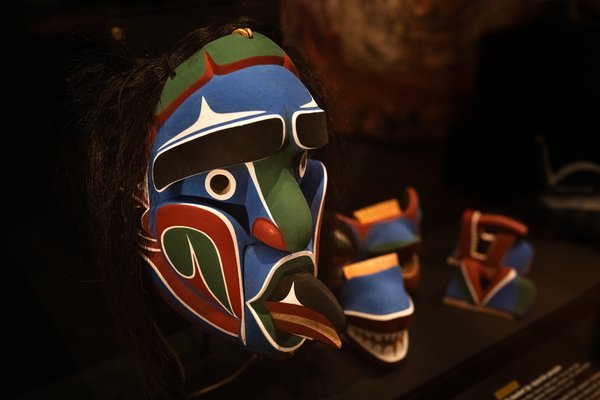A National Treasure

© Australian Museum
Among the giant skeletons displayed in the Westpac Long Gallery of the Australian Museum, on Level 1, a sealed transparent case protects the 2.5-metre-long opalised fossil skeleton of ‘Eric’, or Omoonasaurus demoscyllus, a small, short-necked pliosaur.
Eric belongs to a longextinct carnivorous marine reptile group (suborder Pliosauroidea) that lived in the Jurassic and Cretaceous periods, from about 200 million to 65 million years ago. The fossil has attracted enormous attention not only from the scientific world, but also from the hundreds of young people and adults who visit the Museum each day.
In 1987 an opal miner found this unique specimen near Coober Pedy, South Australia, and proceeded to dig it out of the Early Cretaceous rocks. It was later bought by a Sydney property developer, who commissioned the Australian Museum to carry out the preparation and reconstruction. As the excavation had not been supervised by a palaeontologist, the material collected was discrete and fragmentary and there was little information on the context relationships among the bones and with the surrounding rock. The reconstruction work was a painstaking jigsaw puzzle.
Paul Willis, a postgraduate student at the time, took on the task, and spent over 450 hours turning hundreds of fragmentary pieces into the most complete pliosaur skeleton ever found in Australia. Over 90 per cent of the opalised skeleton was recovered and reassembled.
Paul gave it the nickname ‘Eric’, after the song ‘Eric the half-a-bee’ by the British comedy troupe Monty Python. Australian opals mostly occur in the deeply weathered sedimentary rocks in the Great Artesian Basin of central Australia, which date from about 122 million to 98 million years ago, during the Early Cretaceous Period. Although the formation of central Australia’s opalised fossils (and opal in general) is hotly debated, on existing evidence it seems likely that the opalisation occurred about 24 million years ago, with opal replacing the fossils preserved in these deposits.
It is extremely rare to find a whole animal preserved as opalised fossil. Eric was even better, because its opalised bones featured a mixture of colourful and milky-lustrous gemstones. Inside the animal’s rib cage lay piles of smooth, round pebbles known as gastroliths (literally, ‘stomach stones’, used to help grind up prey).
Mixed in with the gastroliths were a dozen tiny opalised fish vertebrae, remains of the pliosaur’s last supper. About the size of a living seal, Eric was small for a pliosaur and was unusual in having large crests on the skull midline and above the orbits (eye sockets). These primitive features suggested that it might represent the last surviving member of the rhomaleosaurids, a family of pliosaurs that all but disappeared during the Jurassic Period (200–146 million years ago). Eric’s species survived well into the Cretaceous Period (146–65 million years ago), possibly because it was isolated in the cold, high-latitude inland sea that inundated parts of the Australian interior during the Early Cretaceous.
In late 1992 Eric was placed for sale by tender when the owner’s company went into liquidation. The scientific and heritage value of the fossil was enormous, but no public museum in Australia had sufficient funds to acquire it. If Eric went to a private or overseas collector, it could be lost to Australia forever. To keep the irreplaceable specimen publicly available, the ABC Television science program Quantum launched the ‘Save Eric’ appeal. In just three weeks more than 25,000 individuals, families and groups responded with donations, and further support was provided by the Australian company Akubra Hats. With a total of over $500,000 raised, the Australian Museum was able to make a successful bid for all Australians to own Eric.













